
FREE RADICAL RESEARCH
Scope & Guideline
Unveiling the Secrets of Oxidative Mechanisms
Introduction
Aims and Scopes
- Oxidative Stress Mechanisms:
Investigates the biochemical pathways through which oxidative stress occurs, including the generation of reactive oxygen species (ROS) and their interaction with cellular components. - Antioxidant Mechanisms and Therapies:
Explores the role of antioxidants in mitigating oxidative damage, including the development and evaluation of new antioxidant compounds and their potential therapeutic applications. - Cellular and Molecular Biology:
Examines the impact of oxidative stress on cellular functions, including apoptosis, cell signaling, and gene expression, particularly in the context of various diseases. - Pathophysiology of Diseases:
Studies the relationship between oxidative stress and a range of diseases, including cancer, cardiovascular diseases, neurodegenerative disorders, and metabolic syndromes. - Innovative Research Techniques:
Utilizes advanced methodologies such as computational modeling, in vivo and in vitro experimental techniques, and novel imaging approaches to investigate oxidative stress and its implications.
Trending and Emerging
- Ferroptosis Research:
Ferroptosis, a form of regulated cell death linked to iron and oxidative stress, is gaining traction as a significant area of study, particularly in cancer research and neurodegenerative diseases. - Nanoparticle and Plasma Research:
The use of nanoparticles and cold plasma technologies for therapeutic applications against oxidative stress and cancer is emerging as a cutting-edge focus, with implications for innovative treatment strategies. - Interplay Between Inflammation and Oxidative Stress:
There is an increasing emphasis on understanding how inflammation interacts with oxidative stress, particularly in the context of chronic diseases and aging, paving the way for integrated therapeutic approaches. - Metabolomics and Redox Biology:
Metabolomics is becoming a vital tool for investigating oxidative stress and redox status in biological systems, revealing novel biomarkers and therapeutic targets. - Oxidative Stress in COVID-19 and Other Infectious Diseases:
The role of oxidative stress in the pathogenesis of COVID-19 and other infectious diseases is an emerging theme, highlighting its relevance in public health and disease management.
Declining or Waning
- Traditional Antioxidant Studies:
There has been a noticeable decrease in publications focused solely on traditional antioxidant compounds, possibly due to a shift towards more complex and multifaceted approaches to understanding oxidative stress. - General Reactive Oxygen Species (ROS) Measurements:
Research papers that merely report ROS measurements without linking them to specific pathways or therapeutic implications have become less frequent as the field moves towards more integrative studies. - Basic Mechanistic Studies Without Clinical Relevance:
Studies that focus on basic mechanisms of oxidative stress without any clinical or translational relevance are waning, as there is a growing demand for research that directly informs therapeutic strategies.
Similar Journals
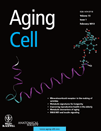
AGING CELL
Pioneering Insights into Aging and Cell BiologyAGING CELL is a premier peer-reviewed journal published by Wiley, specializing in the rapidly evolving field of aging research and cell biology. Established in 2002 and enjoying an impressive track record as evidenced by its Q1 ranking in both Aging and Cell Biology categories for 2023, the journal has become a vital resource for researchers and professionals alike. With a significant impact factor highlighting its scholarly influence, AGING CELL offers an open access model since 2014, ensuring that groundbreaking research is accessible to the global community. The journal covers a wide array of topics related to the mechanisms of aging at the cellular and molecular levels, making it essential reading for anyone invested in understanding the complexities of aging processes and their implications for health and disease. With a broad international readership based in the United Kingdom and beyond, AGING CELL is dedicated to disseminating high-quality research that impacts scientific understanding and fosters advances in the field.

Redox Biology
Connecting Scientists to the Heart of Redox ScienceRedox Biology, published by Elsevier, stands as a premier open-access journal in the fields of biochemistry, clinical biochemistry, and organic chemistry. Since its inception in 2013, the journal has provided a vibrant platform for researchers to disseminate high-quality findings that advance our understanding of redox biology and its implications in health and disease. With an impressive impact factor and ranked Q1 across multiple chemistry disciplines, Redox Biology is recognized for its significant contributions to the scientific community, drawing attention from a global audience. This journal aims to foster a rich dialogue among scientists, clinicians, and students, emphasizing the critical role of redox processes in biological systems. Located in the Netherlands, Redox Biology has become an essential resource for those seeking to explore the nuanced interactions of reactive species and their roles in cellular function and pathology, making it a must-read for anyone interested in the forefront of biochemistry research.

CELL BIOCHEMISTRY AND BIOPHYSICS
Advancing Knowledge in Biochemistry and BiophysicsCELL BIOCHEMISTRY AND BIOPHYSICS is a distinguished journal published by HUMANA PRESS INC, focusing on critical advancements in the fields of biochemistry, biophysics, and cell biology. Since its establishment, the journal has provided a robust platform for the dissemination of cutting-edge research, covering diverse aspects of cellular biochemistry and the physical principles that underlie biological systems. With an emphasis on interdisciplinary studies, the journal aims to facilitate knowledge exchange among researchers, professionals, and students from various scientific backgrounds. As reflected in its 2023 category rankings, it holds a respectable position in Q3 for Biochemistry and Cell Biology, and Q2 for both Biophysics and Medicine (miscellaneous), indicating its significant contribution to these fields. Although it operates under a subscription model, the journal's commitment to maintaining high publication standards ensures that only impactful studies are shared with its audience. With a range of articles spanning theoretical insights to practical applications, CELL BIOCHEMISTRY AND BIOPHYSICS is an essential resource for those aiming to stay at the forefront of biochemical and biophysical research.
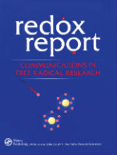
REDOX REPORT
Fostering Dialogue in Life Sciences ResearchREDOX REPORT is a peer-reviewed academic journal published by Taylor & Francis Ltd, focusing on the latest advancements in the fields of biochemistry, clinical biochemistry, and physiology. Since its inception in 1996 and transitioning to an Open Access model in 2018, this journal has aimed to disseminate high-quality research findings and foster discussions within the scientific community. Positioned in the Q2 quartile across several relevant categories, including Biochemistry, Cell Biology, and Clinical Biochemistry, REDOX REPORT is recognized for its commitment to impactful research. The journal plays a crucial role in bridging the gap between fundamental biochemical research and its clinical applications, making it an essential resource for researchers, professionals, and students alike. With a consistent publication record extending to 2024, REDOX REPORT is dedicated to featuring cutting-edge studies that advance our understanding of redox biology, thereby contributing significantly to the ongoing dialogue in the life sciences.
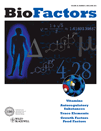
BIOFACTORS
Exploring the Nexus of Science and Clinical PracticeBIOFACTORS, an esteemed journal published by Wiley, serves as a pivotal resource in the fields of Biochemistry, Clinical Biochemistry, and Molecular Medicine. With ISSN 0951-6433 and E-ISSN 1872-8081, the journal has established its reputation since its inception in 1988, showcasing a rich history of scientific inquiry and innovation. Recognized for its high academic standards, it currently holds a Q1 ranking in key categories, including Biochemistry and Medicine (miscellaneous), and ranks in the top 10% for Clinical Biochemistry according to Scopus metrics, reflecting its impact and influence in the scientific community. Although it does not offer Open Access, BIOFACTORS provides researchers the opportunity to publish and disseminate high-quality studies that advance our understanding of biological factors and their clinical implications. The journal actively encourages contributions that bridge the gap between laboratory findings and clinical applications, making it a vital platform for both seasoned researchers and emerging scholars in the life sciences.

Antioxidants
Connecting researchers to the world of antioxidants.Antioxidants is a premier open-access journal published by MDPI that has been actively contributing to the field of antioxidant research since its inception in 2012. Based in Switzerland, the journal holds a noteworthy impact factor indicative of its scholarly influence, particularly given its high rankings in various categories. As of 2023, it proudly sits in the Q1 quartile in Biochemistry, Clinical Biochemistry, Food Science, and Physiology, solidifying its status as a critical resource for innovative studies. With a strong focus on the roles of antioxidants across multiple disciplines—ranging from molecular biology to food science—this journal serves as a vital platform for researchers, professionals, and students aiming to advance knowledge in mitigating oxidative stress and enhancing health through dietary and therapeutic approaches. The open-access model guarantees wide accessibility, allowing for the dissemination of significant research findings globally, making it indispensable for anyone engaged in modern biochemical and physiological studies.
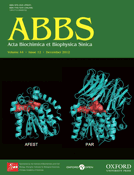
ACTA BIOCHIMICA ET BIOPHYSICA SINICA
Illuminating Pathways in Biomedical Research with Insightful Articles.ACTA BIOCHIMICA ET BIOPHYSICA SINICA, an esteemed journal published by SCIENCE PRESS, is a leading platform in the fields of biochemistry, biophysics, and molecular biology. Based in the United Kingdom, this journal has consistently ranked in the Q2 category for Biochemistry, Biophysics, and Medicine (miscellaneous) in 2023, showcasing its commitment to high-quality research and innovation in life sciences. With a convergence period extending from 1996 to 2024, it features critical insights into biochemical and biophysical processes that underlie biological phenomena. Researchers and professionals seeking to stay at the forefront of discoveries will find its articles to be both informative and transformative. Although not an open-access journal, ACTA BIOCHIMICA ET BIOPHYSICA SINICA aims to advance knowledge and foster collaboration among scientists worldwide, emphasizing its role in the dynamic landscape of biomedical research.
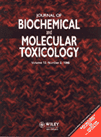
JOURNAL OF BIOCHEMICAL AND MOLECULAR TOXICOLOGY
Elevating Standards in Toxicological ResearchJournal of Biochemical and Molecular Toxicology, published by Wiley, plays a pivotal role in the advancement of knowledge within the fields of biochemistry, toxicology, and molecular biology. Established in 1998, this esteemed journal has garnered a significant reputation, evidenced by its current placement in the Q2 quartile across several categories, including Biochemistry, Health, Toxicology and Mutagenesis, and Medicine. With an ISSN of 1095-6670 and an E-ISSN of 1099-0461, it serves an international audience, offering critical insights and innovative research that shape our understanding of biochemical interactions and toxicological assessments. While it does not operate on an open-access model, the journal ensures rigorous peer review and high-quality publication standards, making it a valuable resource for researchers, professionals, and students dedicated to the exploration of molecular toxicology. The journal's recognized impact within the scientific community is reflected in its competitive rankings among specialized journals, fostering significant contributions to both academic and applied contexts.

CELLULAR & MOLECULAR BIOLOGY LETTERS
Pioneering Research in Biochemistry and Cell BiologyCELLULAR & MOLECULAR BIOLOGY LETTERS, published by BMC, is a premier open-access journal dedicated to disseminating high-quality research in the fields of Biochemistry, Cell Biology, and Molecular Biology. Established in 1996, the journal has emerged as a leader in its domain, boasting an impressive Q1 ranking across three critical categories as of 2023, reflecting its significant impact within the scientific community. With an ISSN of 1425-8153 and an E-ISSN of 1689-1392, it offers accessible research findings to a global audience, having been open access since 2013. Situated in the United Kingdom, at CAMPUS, 4 CRINAN ST, LONDON N1 9XW, the journal continues to serve as a vital resource for researchers, professionals, and students, contributing to advancements in the understanding of cellular and molecular processes. By providing a platform for original research, reviews, and short communications, CELLULAR & MOLECULAR BIOLOGY LETTERS plays a crucial role in fostering dialogue and collaboration within the scientific community.

ARCHIVES OF PHYSIOLOGY AND BIOCHEMISTRY
Catalyzing Scientific Dialogue in Physiology and BiochemistryArchives of Physiology and Biochemistry, published by Taylor & Francis Ltd, is a renowned journal that has been pivotal in advancing knowledge and research in the fields of physiology and biochemistry since its inception. With an impact factor reflective of its significant contributions, this journal is categorized in Q2 in Medicine (miscellaneous) and Q3 in Physiology, underscoring its relevance and scholarly impact within the scientific community. The journal publishes original research articles, review papers, and innovative methodologies that explore the intricate relationships between physiological functions and biochemical processes. With its commitment to fostering scientific discourse, the Archives of Physiology and Biochemistry serves as an essential resource for researchers, professionals, and students alike, providing insights and evidence that drive forward the frontiers of medical and physiological science. The journal is accessible in both print and online formats, ensuring that critical research reaches a wide audience.